Comprehensive guide for home networking
In this article, I will show you how to choose the right hardware for computers, game consoles, or other devices. In addition, it is a way to solve network connection problems whether the network you use is wired or Wi-Fi.
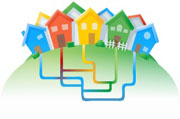 The home network connection is never merely connecting device A to device B. This guide will guide you through a series of steps to set up a network like a home network. We will focus on connecting PCs here, but in this article we will also mention consumer electronics devices that work together to meet some of the needs for PC use from the living room, as well as Internet connection.
The home network connection is never merely connecting device A to device B. This guide will guide you through a series of steps to set up a network like a home network. We will focus on connecting PCs here, but in this article we will also mention consumer electronics devices that work together to meet some of the needs for PC use from the living room, as well as Internet connection.
The following tips can be used for renters as well as home owners, but if you rent, you will certainly have less right to edit your physical environment. The landlord may not like you to drill or close many nails on the wall to do some things like hanging cables.
What do you need from your network?
Before opening a wallet to buy a device, you need to figure out what you want to do with your network.
- Just connect two laptops and maybe a Wi-Fi-enabled mobile phone for web access? This case may require you only an 802.11n access point.
- Do you work regularly at home and need to access the corporate network through VPN technology? In this case you need a router to manage the data flow through the VPN.
- Are you a regular game player? Want to connect multiple massively multiplayer online games or use services like PlayStation Network or Xbox Live regularly? You not only need to buy a good router, but you must also support many key features such as port forwarding.
- Do you watch TV over the Internet, or use services like Hulu or private websites on the network? If you want to stream videos from the Internet to multiple locations in your home, you will definitely want a stable network infrastructure - almost certainly a wired network.
Determining the answers to such questions will go a long way toward ensuring that you build a network that is suitable for the home without too much cost in the process.
Network infrastructure options
Most homeowners often have three basic options for data transfer around their homes: ethernet, Wi-Fi, and HomePlug (powerline network).
Running Ethernet wire
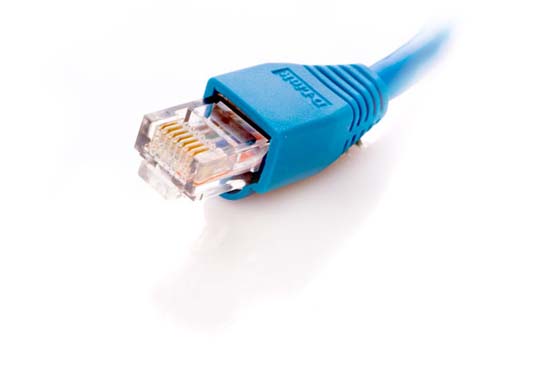 No technology has ever defeated Gigabit Ethernet in data transmission in a home environment. (Although 10-gigabit ethernet technology starts to appear in enterprise environments, it's still too expensive to measure the number of home users). Gigabit ethernet can transfer maximum throughput up to 125MB / s, but you rarely reach that top speed; This may be possible with some mid-range hard drives, but the network overhead will make Gigabit ethernet slower.
No technology has ever defeated Gigabit Ethernet in data transmission in a home environment. (Although 10-gigabit ethernet technology starts to appear in enterprise environments, it's still too expensive to measure the number of home users). Gigabit ethernet can transfer maximum throughput up to 125MB / s, but you rarely reach that top speed; This may be possible with some mid-range hard drives, but the network overhead will make Gigabit ethernet slower.
Today's main standard for gigabit is 1000Base-T, or IEEE 802.3ab. 1000Base-T runs on twisted copper cable. If you plan to use gigabit ethernet, you need to have Cat 5e cable (Category 5e). (It is also possible to use Cat 6. cable though this is slightly overkill for gigabit ethernet).
Be careful when buying Cat 5e, some cheap "Cat 5e" branded cables are not good or may not reach the standard 24-gauge and your throughput on such a low-cost cable may be reduced. Be sure to buy cables from trusted manufacturers and be careful to avoid the cheapest cables.
The weakness of gigabit ethernet lies within its strengths: It's the physical wiring requirement. So you will need to run Cat 5e cable to the rooms you want to connect.
Run the rope
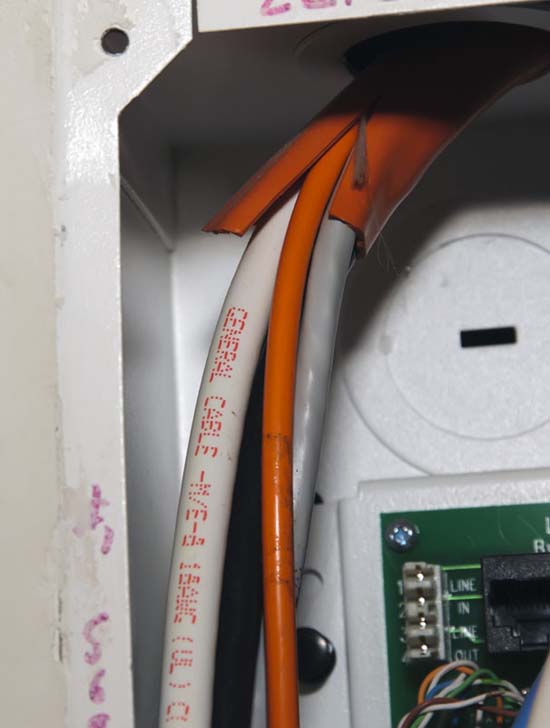 If you also run some kind of wire around your home (phone, optical cable, coaxial cable, etc.) then you can do a couple of things with running wires now, wrap them all up in a common enclosure. The term 'wiring' here contains a wide range of products, including wiring panels, splice boxes and other components, but we will mainly introduce wiring here.
If you also run some kind of wire around your home (phone, optical cable, coaxial cable, etc.) then you can do a couple of things with running wires now, wrap them all up in a common enclosure. The term 'wiring' here contains a wide range of products, including wiring panels, splice boxes and other components, but we will mainly introduce wiring here.
Because the bundles that have your running structure will make it easier to run cables throughout the house, you'll still have to drill some holes in the wall.
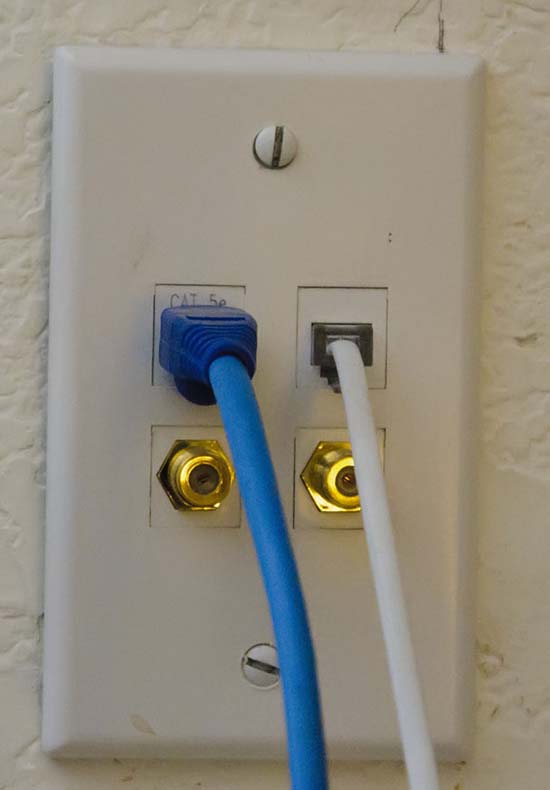 At home, you can run Cat 5e on the floor, then separate it from the main bundles to lead to small rooms. This is a pretty good method in individual rooms that are not intended for many people to access, but it is a less optimal hypothesis in locations where there are many people frequented, like the living room style. - then you need to run multiple lines behind the wall here.
At home, you can run Cat 5e on the floor, then separate it from the main bundles to lead to small rooms. This is a pretty good method in individual rooms that are not intended for many people to access, but it is a less optimal hypothesis in locations where there are many people frequented, like the living room style. - then you need to run multiple lines behind the wall here.
If you can't run the cable in your entire house, the best way to do this is to use Wi-Fi.
WIFI
Let's say beforehand: If you plan to use Wi-Fi for your entire home network, think again. The 802.11n standard sounds quite interesting - providing up to 300MB / s throughput and no need to resort to wiring - but it's not ideal if you want to do streaming media and copy files with Large capacity network back and forth.
For example, in our test, we have a Windows Home Server and several user accounts. The server is used as a repository for applications. Installing large applications on a gigabit ethernet wired network takes only a bit of time compared to installing from a CD. However, installing the software via 802.11n wireless link will cost you a lot of time.
In other words, if you want to connect some small PCs, Wi-Fi may be the right way for you in this case. Wi-Fi is a convenient and easy method for connecting several laptops, Wi-Fi capable phones, or other digital devices such as Apple iPad or netbook.
If you like the convenience of Wi-Fi for connecting laptops and phones, you can consider a mixed-network solution using a combination of Wi-Fi and gigabit ethernet. We will discuss this scenario in the mixed network section below.
What Wi-Fi do you need?
If you choose a Wi-Fi solution, you must use 802.11n. The current cost of 802.11n routers and access points is not too expensive, so ignore older 802.11g devices unless your network needs it.
Before starting shopping to buy Wi-Fi equipment, be sure to know what type of device you're looking for - you'll see both wireless routers and wireless access points in this area.
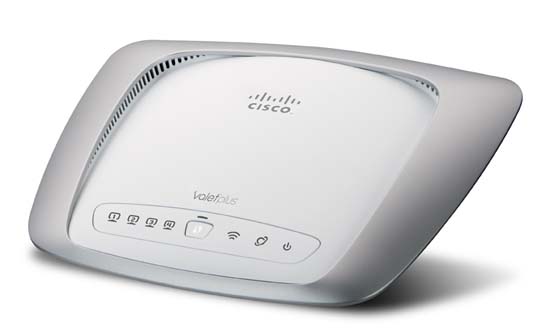
The router receives incoming traffic from the Internet and routes traffic to the correct system within the network. They manage tasks with NAT (network address translation) capabilities. Routers also act as firewalls between the internal network and the external Internet, but that is its secondary function.
The access points simply serve to connect PCs equipped with Wi-Fi components, unrelated to routing functions. Initially access points need to be connected to a router. Today that definition has faded a little, most family-oriented access points have built-in routers but lack the support for ethernet wiring.
Home routers often include switches that support ethernet wiring. However, note that you may still see routers connecting only through wired links without access points.
For our purposes here, I will use the term ' router ' to refer to a wired router with additional Wi-Fi access points. An access point, for this article, will be a Wi-Fi router without a switch that supports ethernet wiring. Routers are not much more expensive than access points but still need your consideration - surely you never know if you need additional flexibility at some point.
The key to getting 802.11n performance is choosing the right router. Routers may have different features and performance, but if you have a small living room and only one or two systems connect to the router, your problem here is very simple.
Small Net Builder provides detailed performance reviews, if you are interested in throughput or coverage. Low-cost routers may have only fast ethernet support and only one Wi-Fi radio station. When shopping, here are some key features you need to look for:
- Dual band : Such routers can support both 2.4GHz and 5GHz or 5.8GHz bands. Only a few routers support 5.8GHz; will increase bandwidth but you will have to sacrifice scope, especially through walls. Some new routers may have a pair of 5GHz radios.
- Multiple antennas : You should have an 802.11n router with at least two antennas. Some home routers may not see the existence of the antenna, but it already has an integrated antenna inside the shell. This is completely OK with medium-sized families.
- Replaceable antennas : If you have a wider range of devices, consider alternative antennas and external antennas. These antennas are usually attached to a small connector. They have a lot of power supplies and come in many different sizes and configurations.
Depending on your needs, you may have to search for routers that support QoS (quality of service) for better streaming media, gaming support (if a gamer) and guest access (if you have many friends). Friends often come and connect).
The main problem to keep in mind with Wi-Fi networks is that bandwidth will be divided by multiple client connections. Consider an 802.11n router with 300-mbps bandwidth, visualizing connecting 10 PCs to that router via Wi-Fi. All 10 systems must share 300 mbps bandwidth. However, most modern routers are quite intelligent in allocating bandwidth when needed, some routers allow you to set bandwidth restrictions for certain links.
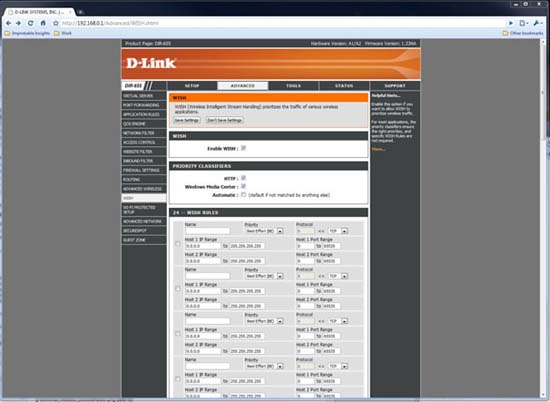
Another feature is that some routers support WISH (wireless intelligent stream handling), which allows you to prioritize certain types of traffic for certain clients or a set of clients. . You can enable WISH if streaming video from a system (home server) to another system (a living room computer or a networked HDTV). Similarly, WISH is useful for keeping VoIP connections stable.
See page 3
Expand Wi-Fi
There will definitely be times when you want to expand your Wi-Fi network for wired-only devices, like the Xbox 360 game console or BD 2.0-equipped Blu-ray player devices.
A wireless bridge is what you need now. You can see the bridges have an ethernet port that supports connecting wired devices as well as bridges with an ethernet switch to set up multiple devices.
There are many other ways you can increase your network coverage. Standard access points often have bridged or extended modes, but there are also dedicated strip extenders that act as Wi-Fi signal relays.
Powerline network (HomePlug)
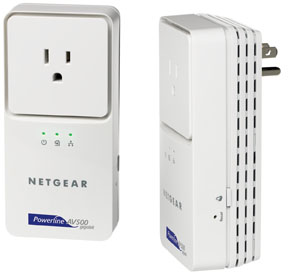
If you want to have reliable bandwidth with certain computers or devices but can't run Cat 5e cable, consider using a HomePlug (powerPlease) network setup. HomePlug is a technology that uses existing power lines in your home to transmit network signals. The HomePlug standard has been developed for years and its current product includes QoS settings (service quality) and provides maximum throughput of up to 200MBps.
Although still a bit less bandwidth 802.11n, HomePlug connections are suitable for single clients. You can plug an ethernet switch into the HomePlug connection, but pay for the bandwidth splitting.
The problem of HomePlug is that your total bandwidth is depended on running wires. The real speed will vary quite differently - new adapters can provide bandwidth up to 100MBps, ideal for home environments with new power system design, but you may still only get around bandwidth 10 to 15MBps in old buildings.
Newly built blocks are usually run better grid systems, but the wiring layout is also a factor. If the wiring is intermittent - for example, there is only one route to route the signal from the ground floor to the upper floor bedrooms via the bridge interface panel. There will be bottlenecks and it can sometimes cause HomePlug to completely block the signal.
Mixed network
You can use a mixed network, ie a network that is both wired and wireless. As we mentioned above, the ground room here has a bundle of Cat 5e running along the wall. We also ran to several other rooms in the house, such as the living room and the bedrooms. Everything is followed by a structure and is run to the central panel on the ground floor, under the stairs up and down.
This kind of networking works pretty well: We have wired the network to where we need it, Wi-Fi access throughout the house. Obviously your needs may be much simpler - maybe you just need to run to a room, and the rest of you use Wi-Fi.
There are also some users who install their cable modem connection in another room, along with the 802.11n router. With this installation method, the network entertainment devices will be wired and the laptops will connect wirelessly via Wi-Fi.
Depending on your needs, maybe just one router with four ethernet ports and having a Wi-Fi access point feature is enough. However, your requirements may be more complex, such as you prefer to run wires to multiple rooms, as well as to add a repeater or signal range extender.
Set up a new network
Suppose you have set up a network infrastructure (running wired or using HomePlug). Now is the time to set everything up. We assume that you also start from a 'ruin'.
The steps are quite simple, just remember that there are some key principles. Models and access point providers and routers may differ in specific configuration details. However, note that when it comes to 'routers' in this section, most of this advice can also be applied to access points in Wi-Fi networks.
We also think that you don't have much experience with older routers, but you can ignore it and go directly to configuring new routers. Some near-wire routers automate the installation process, but knowing the router's manual setup is still the best, here is how you can set up some extra rules to apply to your network. .
Configure the router to connect to a PC
Usually, you will connect your router or access point to your computer via an ethernet cable. Routers often have multiple ethernet ports, so connecting to a computer is very simple. However, some access points may sometimes require a crossover cable, which is a special ethernet cable with two reverse jacks. This crossover cable is usually very short, but necessary cables, so you need to have such a backup cable before proceeding with the configuration work.
Some routers require you to configure computers at a certain IP address to perform the installation step. Some recently released products include a software CD to guide you through the configuration step. Note that different vendors may have different default IP addresses for routers. For example, Linksys routers have a default IP address of 192.168.1.1, D-Link is 192.168.0.1. You need to look up documents about your router or access point to get specific information.
Set up router and Wi-Fi security
Each router has a default administrator account and has a default password, the default account and password are often listed in the accompanying documentation. It's amazing how many people leave the default admin password intact, which can cause someone to take control of your router. So the first thing you need to do is change the admin password.
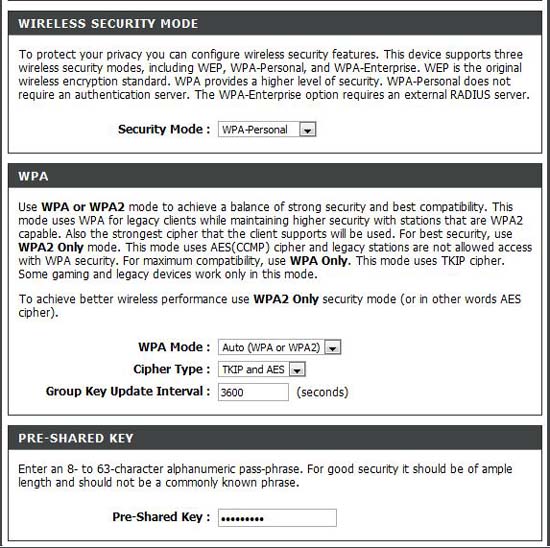
The next step is to set up wireless security. The basic rule is to configure the highest level of security: WPA2, the form of security using AES encryption. However, there are some older applications and hardware that may not work with WPA2, so you need to choose WPA with TKIP encryption to get compatibility. Some older devices may only support the WEP security mechanism, but this mechanism is now relatively insecure. We recommend that you upgrade new devices in this case.
An important step here is to enter a password that acts as an encryption key. Although you often prefer to choose easy-to-remember passwords, you certainly won't want your password to be so memorable that an attacker can easily hack your password. So choose a long password, with both letters and numbers. (WEP keys are more restricted - but you still don't have to use WEP).
Connect the router to the ISP
If you have a new generation router, it may have software that automatically configures your ISP settings, but you can do it manually. Connecting to the Internet means you need to enter the key information about your ISP into the router.
- Connect cable modem, DSL modem, or a gateway that your ISP provides with the port labeled "WAN" or "Internet" on the router.
- Set the router's IP address as indicated by your service provider, if you use a static IP. Otherwise, set up the router so that it will be assigned a dynamic IP address by the service provider provided through DHCP. Note that this is different from the gateway address that you will set up in the client hardware connected to the router.
Routers isolate your internal network from the Internet by presenting an IP address. However, your home network will see another IP address like the router router, typically 192.168.0.1 or 192.168.1.1.
- If the ISP provides a modem that acts as a gateway device, then you need an IP address for that device. Gateway will add some other classes, but there is no other IP address yet. Your ISP needs to configure that hardware first.
- If you use a DNS provider, such as OpenDNS, you need to enter the information (If you don't know what it is, you can skip this step).
Connect wired devices to the router
If you want to connect some computers or other hardware via ethernet, then it's time to connect them. In addition, if you have an ethernet switch, plug them into one of the router's standard ports (not the port labeled "WAN").
We assume that you have set up a router to use the IP address for your internal network automatically, via DHCP. If so, client hardware needs to select an IP address from the router.
Connect Wi-Fi hardware
The last step to allow your network to work is to configure Wi-Fi hardware. When launching the hardware and connecting it via Wi-Fi, you need to enter the encryption key (Wi-Fi password) set up in the router.
Some routers implement some software called "Wi-Fi protected setup" which is a software that can automatically connect to the router wirelessly. You may still need to enter a password, but you will not need to specify which security device type you are using or other connection details. Next, check the documentation for each device's hardware.
Software configuration
You may need to configure the router to suit your own software requirements. For example, you might be a pretty good user of conference voice or VoIP (voice over IP). Or maybe you are a game addict. In any case, you may need to configure features such as port forwarding or virtual servers.
Virtual servers will allow you to configure which ports to public; The router will direct requests to a certain system. This arrangement is useful if you are running a web server or an FTP site.
For games, VoIP and other software, you need to use port forwarding. If you're not familiar with your router settings, learn the tutorials on how to forward ports.
Ports are completely different for private IP addresses (for example, 192.168.0.100: xxxxx , where xxxxx is the port number). Each IP address can support 65,536 ports. For example, port 80 is the port that web browsers use and routers will recognize them automatically.
Depending on the application, you may need to configure either TCP (transmission control protocol) or UDP (user datagram protocol) - or both.
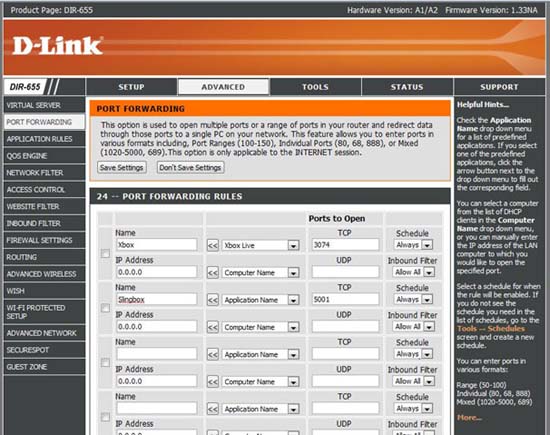
Some gamers and other applications may only use certain ports to connect to game servers or other systems. As a result, you may need to configure your router for a specific port number. For example, the picture here shows a D-Link port forwarding the management page, configured for the Xbox Live service (port 3074) and Slingbox (port 5001).
Forward ports, uPnP and DMZ
Current routers and software are usually more sophisticated, you may not have to configure port forwarding. The general rule is to make the connection with the previous game, without port forwarding, then add the necessary components if you cannot connect.
If the router has UPnP (Universal Plug and Play) feature, some applications will use it to configure port forwarding while the game is running, then turn it off when the software is closed. However, some users disable UpnP for several security reasons. If you do that, you need to properly configure the ports for your application.
A list of ports and related applications can be found on the Internet, if the instructions for the game or application do not give you that information.
There is one thing to avoid if it is probably a DMZ firewall. DMZ (taken from the military term "demilitarized zone") allows you to configure a certain computer to be set up outside the firewall. As a result, that computer will be completely exposed on the Internet. This can be useful for running game servers with older games that are difficult to set up port forwarding, but should be avoided if possible. A system in the DMZ is often vulnerable to attacks from the Internet.
Notes on firewalls
 Modern hardware routers often come with sophisticated firewall features inside. If the router has that feature, you don't need to use a soft firewall, such as a Windows firewall, or a firewall that is incorporated into Internet security software. In our case, we turn off the firewall with software. Is that a safe solution? We have never met anyone who has hacked into our network.
Modern hardware routers often come with sophisticated firewall features inside. If the router has that feature, you don't need to use a soft firewall, such as a Windows firewall, or a firewall that is incorporated into Internet security software. In our case, we turn off the firewall with software. Is that a safe solution? We have never met anyone who has hacked into our network.
Most routers have log-in logging capabilities, checking the log files is the easiest to detect. When looking at a log for the router, D-Link DIR-655, we see the following line:
Lỗi thoát vào yêu cầu TCP kết nối từ IP address xxx.yyy.zzz.123 to [router IP address]
We have changed the IP address above and have chosen not to reveal our IP address for a number of reasons. What might be present is a malicious intrusion attempt, or software bot by pinging the router to see if the network is exposed.
There is no firewall, but we need to have success with hardware firewalls with modern routers. Although the default settings are pretty good, there are still many additional features for some people. If you are worried about someone stumbling into your network, delve into all the settings on your hardware firewall.
Troubleshoot
Chúng tôi có thể cung cấp một số mẹo khắc phục sự cố đơn giản ở đây nhưng sự kết hợp phần cứng và phần mềm có thể khá khác nhau. Để chuẩn bị, hãy liên lạc với ISP, nhà sản xuất router của bạn hoặc hỗ trợ kỹ thuật cho phần cứng máy khách thích hợp.
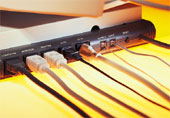 Ảnh: Người dùng không thể thiết lập router : Đôi khi bạn cũng không thể kết nối đến router hoặc điểm truy cập để thực hiện cấu hình ban đầu. Hãy bảo đảm rằng bạn đã kết nối đến đúng cổng; một số router cũ có thể cho phép bạn thực hiện cài đặt ban đầu chỉ bằng cách kết nối đến một cổng nào đó. Ngoài ra các router cũ hơn và hầu hết các điểm truy cập có thể yêu cầu áp ethernet đấu chéo.
Ảnh: Người dùng không thể thiết lập router : Đôi khi bạn cũng không thể kết nối đến router hoặc điểm truy cập để thực hiện cấu hình ban đầu. Hãy bảo đảm rằng bạn đã kết nối đến đúng cổng; một số router cũ có thể cho phép bạn thực hiện cài đặt ban đầu chỉ bằng cách kết nối đến một cổng nào đó. Ngoài ra các router cũ hơn và hầu hết các điểm truy cập có thể yêu cầu áp ethernet đấu chéo.
Bạn có thể cần thiết lập máy tính của mình với một địa chỉ IP nào đó, sau đó khởi động lại để kết nối với router.
Router không thấy ISP : Điều này thường xảy ra nếu router được thiết lập tự động nhận địa chỉ IP từ ISP, tuy nhiên bạn đã yêu cầu một hoặc nhiều địa chỉ IP tĩnh (hoặc nếu đã nhập vào địa chỉ IP tĩnh sai). Thêm vào đó, nếu router của bạn làm việc như một gateway thì bạn phải cấu hình router của mình khác đi.
Phần cứng máy khách không thể kết nối : Bảo đảm rằng DHCP được kích hoạt. Nếu bạn đang sử dụng kết nối Wi-Fi, cần bảo đảm các vấn đề bảo đảm rằng bảo mật và mã hóa đã được thiết lập đúng. Cho ví dụ, nhiều laptop có các công cụ do nhà sản xuất cung cấp có thể streamline quá trình cấu hình. Chúng tôi đã thấy một số công cụ này phát hiện sai kiểu bảo mật đang được sử dụng, vì vậy bạn phải vào các tiện ích kết nối mạng của chính Windows để thiết lập điều đó.
Sau khi kết nối và test thử
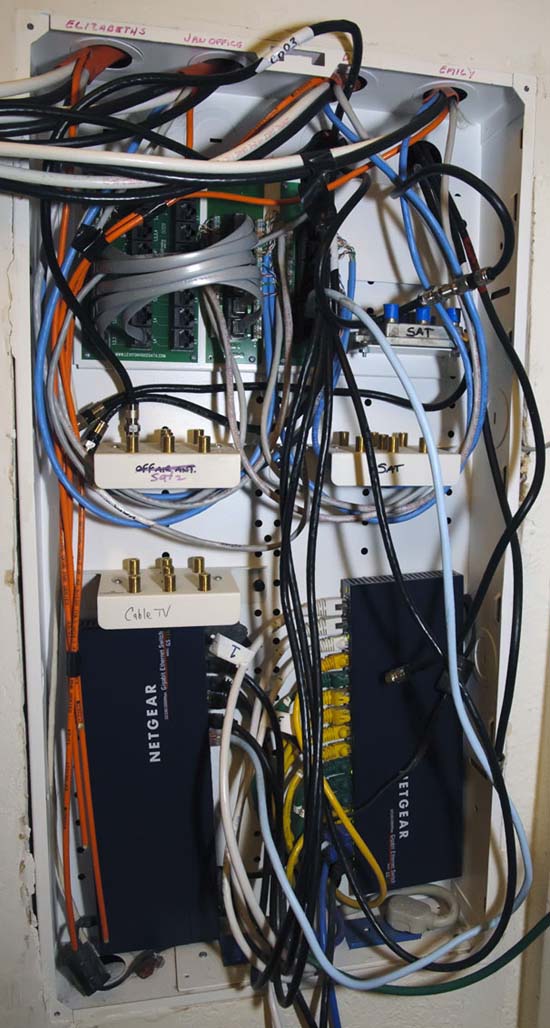
Hãy quan sát một mạng cụ thể: đây là mạng mà chúng tôi thử nghiệm trong bài. Mạng này tương đối phức tạp nhưng với nó chúng ta có thể chơi game trực tuyến, không chạy máy chủ web hoặc FTP site từ bên trong nhà.
Như những gì đã đề cập, chúng tôi có bó dây Cat 5e ở chân tường trong phòng chính, còn các dây khác được chạy đến các phòng khác trong nhà. Tất cả đều được bó chặt với một panel chạy dây trung tâm.
Bên ngoài lab, thiết lập phức tạp nhất trong nhà là phòng chung cả gia đình, nơi có nhiều thiết bị cần kết nối Internet:
- Microsoft Xbox 360 (chạy dây)
- Nintendo Wii (Wi-Fi)
- Pansonic DMP-BD85k Blu-ray player (chạy dây, mặc dù nó cũng có tùy chọn Wi-Fi)
- Denon TX-NR3007 A/V receiver (chạy dây)
- HP Premium Fax All-in-One printer (chạy dây)
- Dell Zino HD home theater PC (chạy dây)
Đó là 5 kết nối chạy dây và một kết nối Wi-Fi.
Mỗi phòng có bỏ một đầu dây Cat 5e, đầu dây kết nối đến switch gigabit ethernet tám cổng của Linksys. Tất cả các thiết bị chạy dây sẽ kết nối thông qua switch.
Trước khi bỏ một đầu dây trong phòng chung của cả gia đình, chúng tôi đang sử dụng cầu không dây D-Link DAP-1522 802.11. Cầu nối đã kết nối với router thông qua đường Wi-Fi, với 4 cổng gigabit ethernet. Lúc này chúng tôi có 5 thiết bị chạy dây, có một đầu vật lý và switch 8 cổng đã có thể sử dụng.
Kết nối Internet được thông qua dịch vụ Business ISP của Comcast, đây là dịch vụ kết nối thông qua một kết nối cáp đến SMC gateway. Tuy gateway cũng có một router đi kèm nhưng nó bị hạn chế ở tốc độ 10/100 fast ethernet, vì vậy router này bị vô hiệu hóa.
Một cáp chạy từ gateway đến D-Link DIR-655, thiết bị có 4 cổng gigabit. Một cáp khác chạy từ một trong số 4 cổng gigabit đến một trong số 16 cổng của switch Netgear, hai switch được bắc cầu qua một cáp ngắn.
Đây là sơ đồ của mạng .
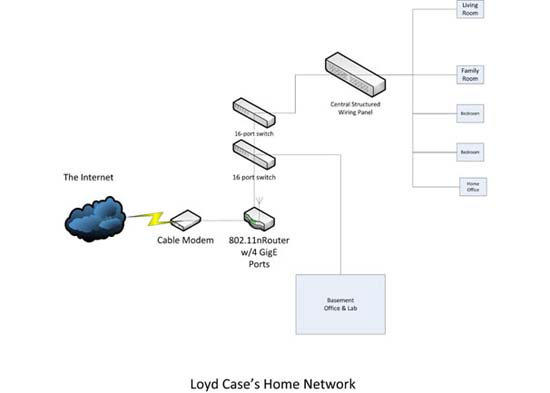
Nhận xét toàn diện về bản thân mạng khá ổn định. Ngoài Nintendo Wii, chúng tôi có một iPhone và một iPad kết nối thông qua Wi-Fi, cũng như hai laptop nữa. Tuy nhiên chúng tôi chưa từng thấy bất cứ vấn đề gì về thông lượng mạng đối với bất cứ thiết bị nào trong mạng, thậm chí với cả những download cỡ lớn.
Một thành viên trong số chúng tôi có thể thực hiện thoại hội nghị khi người khác đang download một game dung lượng lớn thông qua dịch vụ game; không ai trong số chúng tôi thấy có vấn đề gì với kết nối.
You should read it
- Warning: Detecting more than 1000 Cisco router and switch devices in Vietnam has a serious security error
- 6 ways to network for routers (routers)
- How to connect the network with a bug
- Network basics: Part 2: Understanding the Router
- How to Connect 2 Routers to Expand Your Network
- The way that 5G will change Internet connection in your home
- Share Internet connection with wired model
- How to set up wireless home network with mobile phones
May be interested
- 4 handy networking tools built into Windows 10 PCs and their functions
 networking is an essential part of modern computing. whether you're working from home or in the office, a reliable and efficient network can make a complete difference in productivity.
networking is an essential part of modern computing. whether you're working from home or in the office, a reliable and efficient network can make a complete difference in productivity. - 12 helpful ways SEO tips on Pinterest
 if you are looking for an information site or social networking site to find yourself creative ideas or plans for a job or outing, pinterest is home to millions of great things.
if you are looking for an information site or social networking site to find yourself creative ideas or plans for a job or outing, pinterest is home to millions of great things. - Instructions on how to build a computer at home simply and quickly
 a detailed guide on how to build a home computer is simple and quick. building computers at home is not a simple matter if you do not have much experience.
a detailed guide on how to build a home computer is simple and quick. building computers at home is not a simple matter if you do not have much experience. - How to speed up Windows 10 comprehensive, most effective
 how to speed up windows 10 comprehensive, most effective. with windows 10, the company has optimized for the weak configuration, improving boot speed and information processing speed much faster. still, some users feel that windows 10 is old
how to speed up windows 10 comprehensive, most effective. with windows 10, the company has optimized for the weak configuration, improving boot speed and information processing speed much faster. still, some users feel that windows 10 is old - Qualcomm launches Wi-Fi 7 Networking Pro - the world's largest scalable commercial Wi-Fi 7 platform
 on may 4, 2022, qualcomm technologies, inc. announced the 3rd generation wi-fi 7 networking pro series platform, now being launched and made available to qualcomm partners globally,
on may 4, 2022, qualcomm technologies, inc. announced the 3rd generation wi-fi 7 networking pro series platform, now being launched and made available to qualcomm partners globally, - Networking: 4 basic errors to avoid when creating relationships
 in business and work, networking needs to be recognized and implemented in a more professional and professional way if you want to achieve the highest efficiency.
in business and work, networking needs to be recognized and implemented in a more professional and professional way if you want to achieve the highest efficiency. - Top comprehensive computer testing software 2020
 top comprehensive computer testing software. when you find that your computer is no longer working properly or has just been equipped with new hardware, it's time to test your computer's performance. currently there are often a lot of computer evaluation software on the market, but not all are good.
top comprehensive computer testing software. when you find that your computer is no longer working properly or has just been equipped with new hardware, it's time to test your computer's performance. currently there are often a lot of computer evaluation software on the market, but not all are good. - What is PHP-FPM? A Comprehensive Guide to Optimize Your Website
 php-fpm (fastcgi process manager) is a software that processes php requests faster and more efficiently than traditional methods like php-cgi.
php-fpm (fastcgi process manager) is a software that processes php requests faster and more efficiently than traditional methods like php-cgi. - Speed up networking when working from home with APKCombo VPN
 solution to accelerate smartphone browsing can now be used on windows 10 computers.
solution to accelerate smartphone browsing can now be used on windows 10 computers. - Learn about Home Assistant - Your home automation platform!
 home assistant is an open source home automation platform that runs on python 3.x, designed to be easily deployed on any computer from raspberry pi to network storage devices (nas) and even a docker container to deploy on other systems easily.
home assistant is an open source home automation platform that runs on python 3.x, designed to be easily deployed on any computer from raspberry pi to network storage devices (nas) and even a docker container to deploy on other systems easily.










 Optimize Apache server performance
Optimize Apache server performance Check the TMG 2010 virtual private network server - Part 3: Configure TMG Firewall as L2TP / IPsec Remote Access VPN Server
Check the TMG 2010 virtual private network server - Part 3: Configure TMG Firewall as L2TP / IPsec Remote Access VPN Server Domain Controller virtualization solutions - Part 1
Domain Controller virtualization solutions - Part 1 AuthenticateMyWiFi wifi authentication
AuthenticateMyWiFi wifi authentication Instructions on DD-WRT - Part 1: Static DHCP
Instructions on DD-WRT - Part 1: Static DHCP Device Check Wi-Fi AirCheck Wi-Fi Tester 1.0
Device Check Wi-Fi AirCheck Wi-Fi Tester 1.0